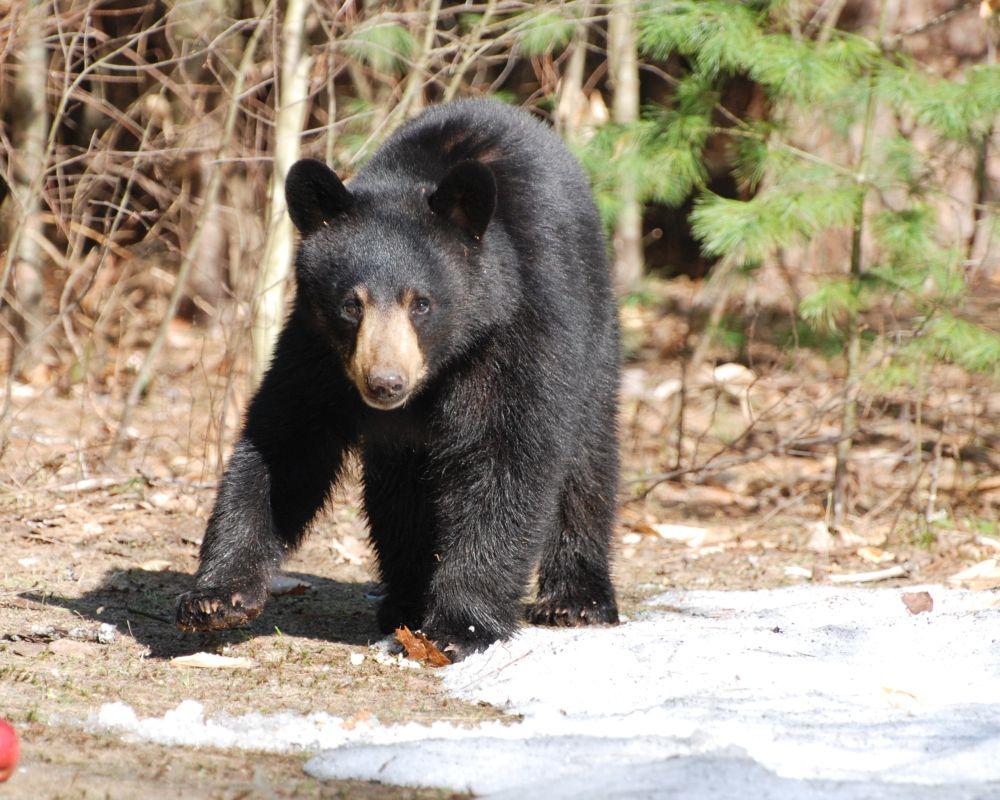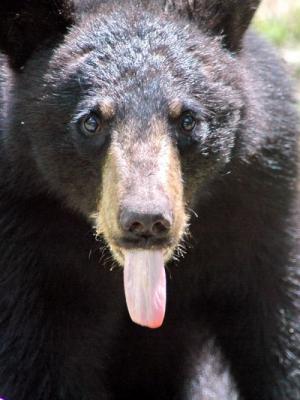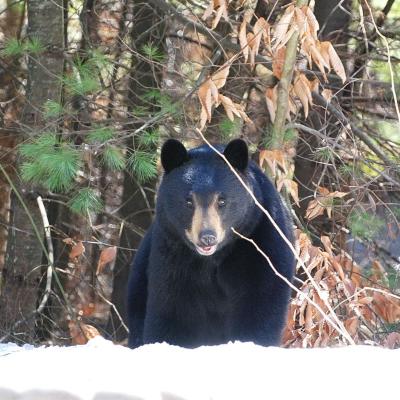Forest Journal
- Tags:
- Wildlife

Best place for bears? In the woods. Photo by Sheri Tucker.
It was troubling to learn about a family of black bears – the mother sow with four cubs dubbed the “Jackson Five”- that were likely compromised by people intentionally feeding them. Eventually, mother bear began breaking into homes in and around Jackson, N.H., before she was legally shot by a hunter. Bears find food and stay wild and safe in forests, not in neighborhoods and backyards.
Renowned black bear expert Ben Kilham is the author of Among The Bears: Raising Orphaned Cubs in the Wild. Kilham operates New Hampshire’s only licensed orphan bear cub rehabilitation center. Kilham has cared for and released about 130 bear cubs in the past 30 years. It has now become his job to care for the orphaned Jackson bear cubs. N.H. Fish and Game biologists captured the cubs because they feared they would be fed and habituated like their mother. Kilham's care will keep the cubs wild until they are released next spring.

I visited with Ben Kilham recently to learn about black bears’ relationship to forests, their preferred habitat. “Bears are fundamentally forest animals” Kilham explains. Forests provide bears with food, concealment and travel corridors which connect suburbs to rural areas. Even narrow strips of woods provide safe travel lanes for bears. Forested edges of suburban housing and commercial businesses allow bears passageways between larger blocks of adjacent forestland where food is plentiful and risks minimal.
Kilham explains how forests supply black bears with natural foods they require and decrease risks associated with people. Kilham relates that female black bears occupy a core home range averaging three to eight square miles. Males inhabit expanded ranges up to 200 square miles. Males are wide-ranging, traversing matriarchal territories of several different familial clans of females with cubs or mature offspring and their cubs.
Kilham emphasizes that bears prioritize natural food resources by quality, quantity and the inherent risks associated with obtaining calories. Bears essentially calculate profit and risk. Kilham explains black oil sunflower seeds in backyard birdfeeders are of such high calorie content compared to natural foods, the “profit” of raiding backyard birdfeeders becomes worth the risk of crossing busy roads and encountering people or domestic dogs in suburban settings.
Unlike the “Jackson Five,” wild bears living in deep forest are less likely to become nuisances by posing threats to homes, people or domestic animals. Natural foods and responsible human behavior prevent human-bear conflicts and help to keep wild bears free.
Ben Kilham states “85% of bears’ natural diet comprises vegetation. The other 15% is animal protein; with 90 to 95% of that consisting of insects.” Ants, termites, wasps and their larvae are an underappreciated component of bear diets. One orphan female bear named “Yoda” Kilham fitted with a radio-telemetry collar for long term study before she was released. In early autumn, Kilham observed Yoda sniffing out and digging-up ground hornet nests. Kilham recorded Yoda feeding at the rate of 12 to 16 hornet nests per hour. Kilham has followed a current study bear named “Squirtie” for a decade. Kilham says it’s not uncommon for Squirtie to excavate 40 to 60 hornet nests per day while foraging in the forest. In autumn, ground hornet nests are packed with nutritious grubs – fat-rich and protein-laden larvae destined to be adult hornets. The hornet stings do not deter bears digging up nests. In a similar profit-to-risk calculation, hornet grub calories are worth adult hornet stings.

Forests provide an annual cornucopia of bear food. Analysis of bear scats reveals wide-ranging travel. Kilham finds oak acorn scats deposited in forested swamps. Conversely, he finds wetland sedges including “nodding sedge” in bear scat deposited in oak forests.
In summer, fruits and berries provide carbohydrates and insects – particularly ants and termites in rotting stumps and fallen rotting logs. Summer fruits include raspberries, blueberries, choke cherries and pin cherries. By August, forests provide fat-rich ripe beechnuts and beaked hazelnuts. When beechnut crops are sparse, farmlands lure bears to sweet corn, apples or pasture grasses with inherent risks when leaving the shelter of the woods.
From September to leaf-off in November, oaks provide acorns. Acorns and beechnuts are the most important annual natural foods for bears. When acorn crops were plentiful in 2014 and again in 2015, bears remain in remote locations, unless habituated to unnatural foods: dumpster trash, birdfeeders, chicken coops, pet food or intentional feeding.
When natural food becomes scarce in late November, bears have built-up sufficient fat reserves. With the leaves fallen from maples and birch and with oak and beech leaves soon to fall, bears remain closer to preferred dens. With leaves off, bears lose concealment, becoming more visible and vulnerable. Kilham relates how before and after leaf-on season, bears remain in conifer thickets by day and are more nocturnal when foraging.

When the ground freezes and leaves are off in December, it’s generally safe to re-hang winter birdfeeders because bears are in dens. Bears select a primary den with alternate options nearby. Fallen logs, logging slash, brush piles and thick cover beneath softwood saplings provide good den sites. Kilham says expectant females (bred last June) are the earliest to enter dens. They’re followed by sows with first-year cubs. Males remain active, searching for food in early winter months if food remains plentiful and snow doesn’t hinder travel.
Warm temperatures this autumn may delay denning activity. But when the curtain of leaves falls and acorns become scarce, bears re-enter dens regardless of temperatures. Lack of food and concealment are the more important limiting factors. The risks of remaining active aren’t worth diminished food rewards.
NH bear populations have increased and remain stable with hunting seasons managed by the NH Department of Fish & Game. Suburbs are risky places for bears. Forests are ideal. Trees provide plentiful foods. After logging, sunny patches regenerate fruiting berries and brushy thickets for concealment.
You remember the old cliché - “Does a bear (do anything) in the woods?”
In fact, bears do everything in the woods.
